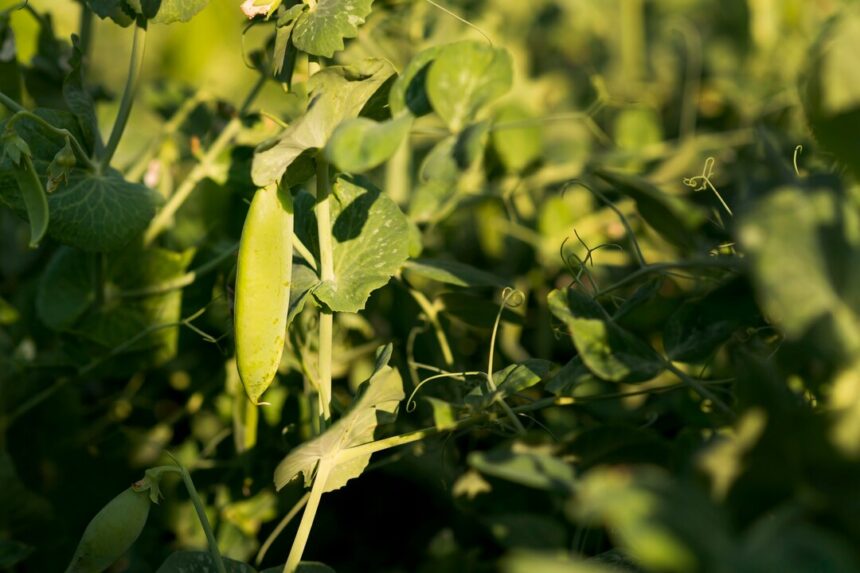Peas, with their delicate flavor and nutritional value, are a staple crop in South Africa, appreciated in both home gardens and commercial agriculture. To ensure a successful harvest of high-quality peas, it’s crucial for farmers to employ effective techniques that enhance both yield and quality. In this article, we’ll delve into strategies for cultivating premium peas in South Africa:
1. Selecting the Right Varieties:
Choose pea varieties that are well-adapted to the local climate and growing conditions in South Africa. Consider factors such as heat tolerance, disease resistance, and maturity period to maximize yield potential and quality.
2. Soil Preparation and Fertility:
Prepare the soil thoroughly before planting peas by incorporating organic matter, such as compost or well-rotted manure, to improve soil structure and fertility. Conduct soil tests to assess nutrient levels and pH, and make necessary amendments to create an optimal growing environment for peas.
3. Proper Planting Density:
Plant peas at the appropriate spacing to optimize sunlight exposure, air circulation, and nutrient availability. Adequate spacing between plants reduces competition for resources and promotes vigorous growth, resulting in higher yields and better quality peas.
4. Irrigation Management:
Implement efficient irrigation practices to provide consistent moisture to pea crops throughout the growing season. Monitor soil moisture levels regularly and adjust irrigation frequency and duration based on weather conditions and crop needs to ensure optimal growth and development.
5. Nutrient Management:
Fertilize pea crops judiciously to meet their nutritional requirements at each growth stage. Apply balanced fertilizers containing nitrogen, phosphorus, and potassium, along with micronutrients as needed, to promote healthy plant growth, flowering, and fruit set.
6. Trellising and Support:
Provide adequate support for climbing pea varieties by installing trellises, stakes, or netting to prevent plants from sprawling on the ground. Proper trellising improves air circulation, reduces disease pressure, and makes harvesting easier, resulting in higher yields of premium-quality peas.
7. Weed Control:
Implement effective weed management strategies to minimize competition for resources and prevent weed-related yield losses in pea crops. Use mulching, hand weeding, mechanical cultivation, or herbicides as appropriate to keep weed populations under control throughout the growing season.
8. Pest and Disease Management:
Monitor pea crops regularly for signs of pests, such as aphids, thrips, and pea moths, as well as diseases like powdery mildew and root rot. Implement integrated pest management (IPM) practices, including cultural, biological, and chemical control methods, to minimize pest and disease damage and protect yield potential.
9. Timely Harvesting:
Harvest peas at the optimal stage of maturity to ensure maximum sweetness, tenderness, and flavor. Pea pods should be firm, plump, and bright green in color, with seeds fully developed but still tender. Use sharp scissors or pruning shears to harvest peas carefully to avoid damaging the plants.
10. Post-Harvest Handling:
Handle harvested peas with care to minimize bruising and damage during transport and storage. Keep peas cool and dry, and store them in perforated plastic bags or containers in a cool, humid environment to maintain freshness and extend shelf life.
By implementing these techniques for enhancing quality and yield in pea cultivation, farmers in South Africa can maximize their harvests and meet market demands for premium-quality peas. By prioritizing soil health, irrigation management, nutrient balance, pest and disease control, and post-harvest handling, growers can cultivate high-yielding pea crops that command top prices and contribute to sustainable agriculture in the region. With dedication, innovation, and a commitment to excellence, South African farmers can cultivate a bountiful harvest of peas and reap the rewards of their labor.
Join 'Farmers Mag' WhatsApp Channel
Get the latest Farming news and tips delivered straight to your WhatsApp
CLICK HERE TO JOIN






